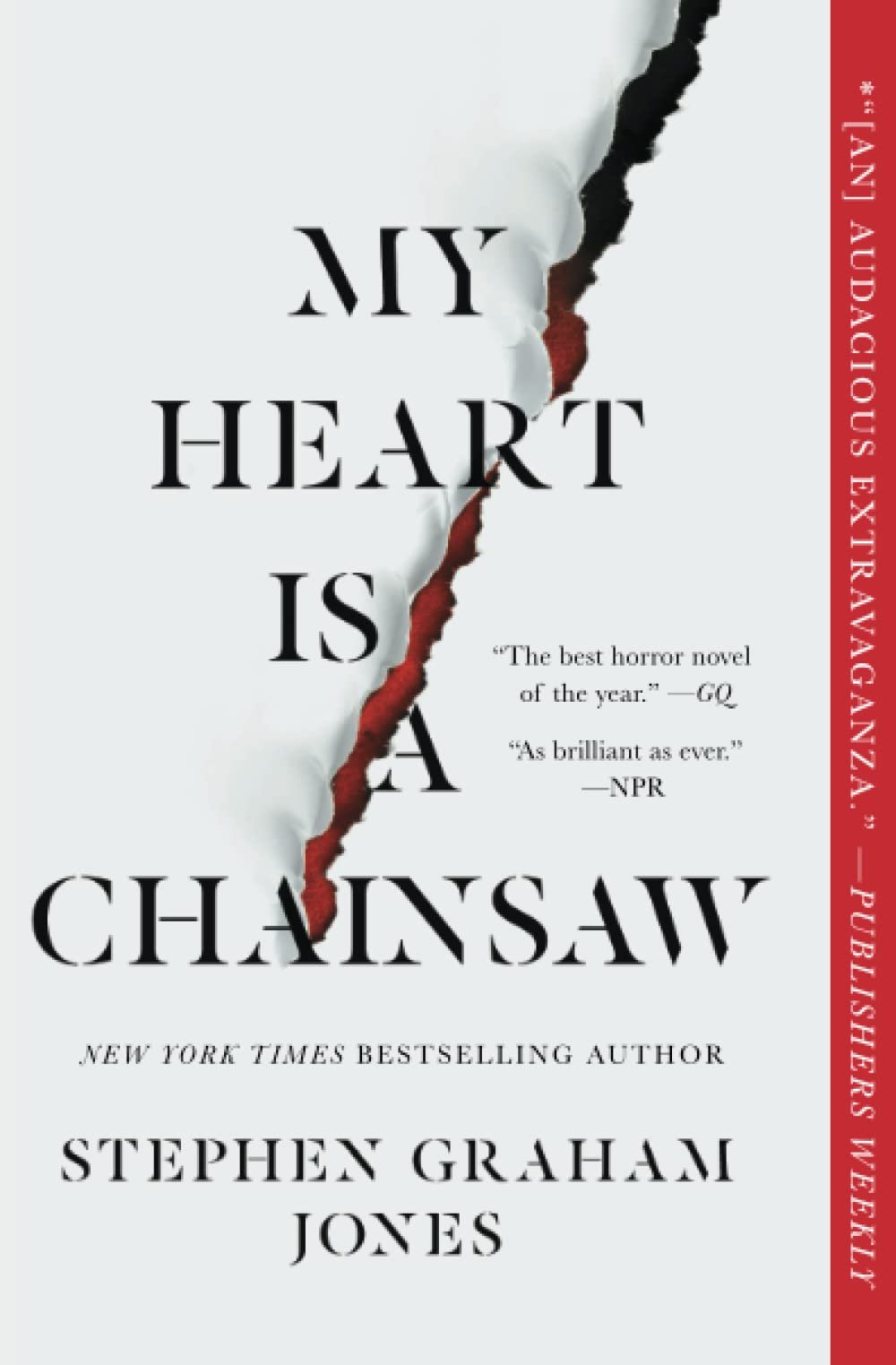My Heart Is A Chainsaw & the Myth of the Final Girl
What this Final Girl does is turn around, scream into his face that she’s so sick of this, that this is ENOUGH, that this is over.
-Stephen Graham Jones, My Heart Is A Chainsaw
Jennifer “Jade” Daniels, the hero of My Heart Is A Chainsaw, is an expert on slasher films. She doesn’t watch them for pleasure. She watches them to learn how to survive. Her ultimate goal? To be the final girl. For those unfamiliar with the term, the final girl is the person in the slasher flick who survives the slaughter of friends and family. She is the one who stops the monster’s killing spree (although “stop” is a relative term; the monster and the final girl inevitably meet up again in the sequel). There is a lot of debate about who the original final girl was, but most people award the title to Laurie Strode in Halloween.
Jamie Lee Curtis as Laurie Strode
There’s only one problem. Jade Daniels has none of the classic characteristics of the final girl. She isn’t white or middle-class. She doesn’t live in the suburbs. She is a Native American teenager living in the remote town of Proofrock, Idaho. She is “half as Indian as her dad and getting zero smiles from Above.” The only way she can hope to survive is to hit the books, or in this case, the movies. If Jade wasn’t born a final girl, she hopes to learn how to become a final girl.
Unfortunately, Jade Daniel’s fear of being a victim has firm roots in reality. According to government statistics, indigenous women are six times more likely to be murdered than non-indigenous women. They are more likely to be kidnapped or go missing.
Public Service Announcement On The Highway Of Tears
In fact, beginning in the 1970’s, it was believed that a serial killer was active on Highway 12 in Canada. His targets? Indigenous women. The number of victims on what became known as the Highway Of Tears is still being debated but the death toll is believed to be more than 80 women.
And why hasn’t the media run with the Highway Of Tears story? Why haven’t they drawn attention to a death toll that, if verified to be the work of one person, is higher than Ted Bundy or Jeffrey Dahmer combined?
Because the women who were killed weren’t white. In a 2010 paper titled “Newsworthy Victims?”, Kristen Gilchrist studied the news reports on the disappearance of six women: three Indigenous, three White. She found a “hierarchy of female victims” existed. “Like social relations in general, this binary is deeply tied to race and class.” In the case of the white women who disappeared, there were 511 articles, versus 82 for the Indigenous women. The articles about the white women mentioned them by name and “were longer and more likely to appear on the front page”. The Indigenous women were usually described “impersonally and rarely by name” and “lacked the same kind of personal stories, anecdotes, and memories” as the white victims. In other words, the white women “counted” while the Indigenous women did not.
And what about more direct forms of institutional racism? Well, that’s yet another reason for Jade Daniels to study the final girls.
Me and Stephen Graham Jones, author of My Heart Is A Chainsaw and the next book in the series, Don’t Fear The Reaper.
Books & Subjects Related To This Article. Two Fiction, Two Fact.







